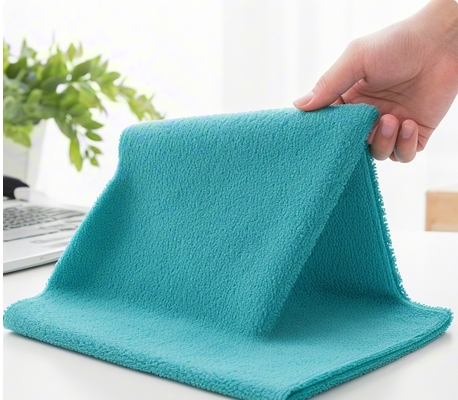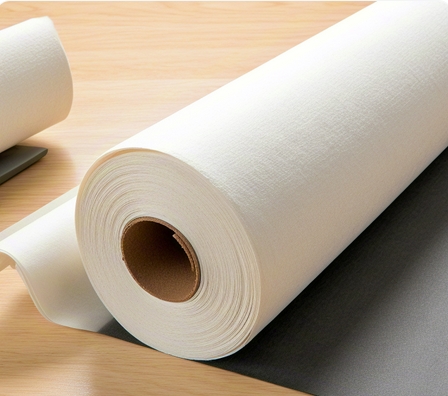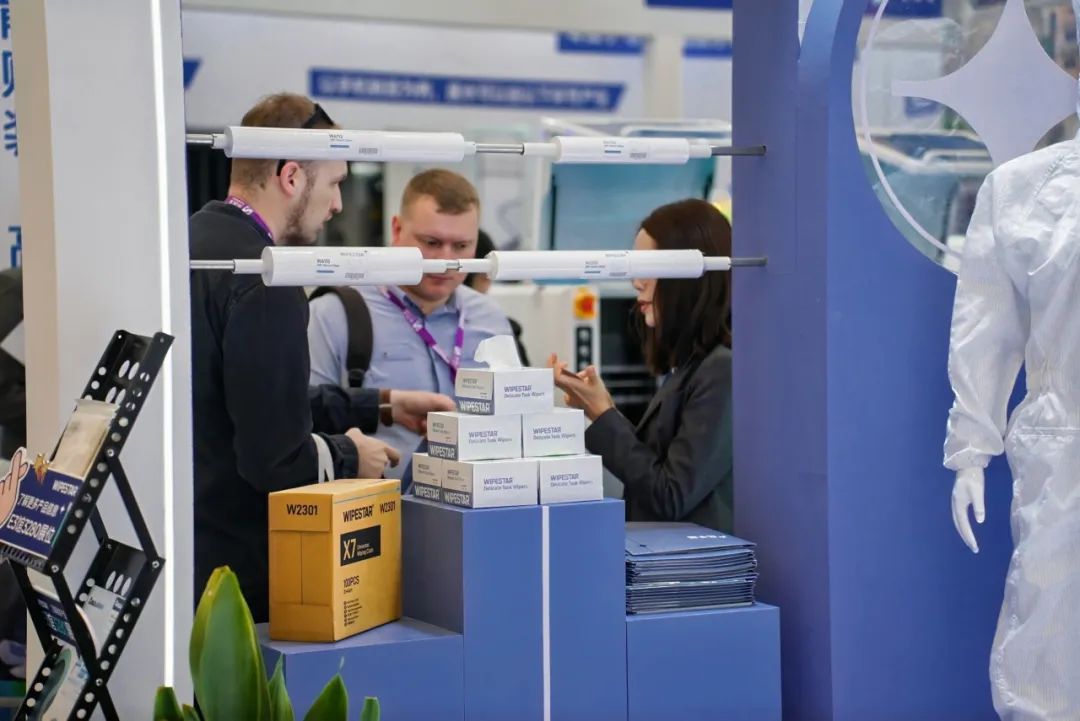Language

In the precision automobile manufacturing system, industrial wipes, as key consumables, run through four core process links: stamping, welding, coating and assembly. According to the 2023 technical report of the International Automobile Engineering Association, there are significant differences in the physical characteristics and chemical stability of the wipe cloth material in different production processes. This article will deeply analyze the core parameters and engineering applications of the five mainstream automobile wipe cloth materials.
The durability of polyester material decrypted polyester fiber (polyester) exhibits excellent wear resistance due to the rigid structure of benzene ring in its molecular chain. According to SGS laboratory test data, a 200D high-strength polyester wire braided wipe cloth still maintains 92% fiber integrity after 8,000 consecutive frictions. This characteristic makes it the preferred material for engine manufacturing workshops. For example, the EXCEL-PRO series wipe cloth adopted by Daimler Group at its Stuttgart factory. Its double-layer edge locking process can effectively intercept metal particles above 0.2mm and achieve zero fiber shedding in the crankshaft polishing process.
Fluid management of wood pulp composite material revolution The honeycomb microstructure of natural wood pulp fibers (SEM scans show a porosity of 85%) gives it a transient water absorption capacity of 0.8 ml per square centimeter. In order to break through the technical bottleneck of insufficient tear resistance strength of pure wood pulp materials, the industry generally adopts polyester-wood composite technology. The HYDROGEN 3D wipe cloth adopted by the BMW Group Leipzig factory uses a composite structure of 70% ultra-fine polyester + 30% coniferous wood pulp. After the DIN EN 21974 standard test, its wet tensile strength reaches 12N/cm², which successfully solves the problem of wiping water-based mold release agent in the coating workshop.
The non-polar properties of polypropylene (PP) for oily pollutant solutions for PP substrates make their surface energy as low as 29mN/m, forming an ideal contact angle with lubricating oil (surface energy of about 35mN/m). The PILASTER series of oil-absorbing cloth used by the Volkswagen Wolfsburg factory on the DSG gearbox assembly line has a three-dimensional melt blown PP structure that can absorb ATF gearbox oil with a weight of 18 times. More notably, a composite wipes cloth with 55% PP + 45% wood pulp (such as MANN + HUMMEL's MDX product) is used to accelerate oil penetration through the capillary action of the wood pulp layer, and the oil film removal efficiency of 200cm² per minute is achieved in the Audi stamping workshop.
Nonlevel cleaning touch
This precision microstructure cleaning tool uses polymer viscose fiber and meshes weaving technology, and its three-dimensional structure can accurately capture 0.5-5 micron suspended particles. SGS laboratory test data shows that in the constant temperature and dust-free workshop of Tesla's Berlin Super Factory, the 3M™ 8800 series automotive wipe cloth material has a pass rate of 99.98% of the glass substrate, and a single operation can remove 98.7% of anodized aluminum dust. Its unique diamond mesh design increases the effective contact area by 27% compared to the traditional plain-wall structure, which is particularly suitable for the precision dust removal needs of the power battery module packaging link.
In the field of automotive manufacturing and glue removal, the chemical properties of viscose substrates show significant advantages. Taking the actual measured data from General Motors' Michigan factory as an example, when using VK-8 mesh cloth to treat polyurethane sealant, 92% of the residual colloid can be removed with a single wipe with 80℃ hot air assisted. Compared with the processing efficiency of 1.2 meters per minute of traditional metal scrapers, the working speed of this polymer viscose material has been increased to 3.6 meters per minute, and the paint surface damage rate has dropped from 0.15% to below 0.002%. Its working principle lies in the thermoplastic properties of viscose fibers. When the temperature reaches the critical point of 75℃, the surface of the material will produce a directional micro-adsorption effect.
The structural innovation of automotive wipe fabric materials brings disruptive changes. Taking the comparison test of Volkswagen Group's Wolfsburg factory as an example, the new mesh cloth can complete 240 meters of weld treatment in a single shift, which improves the operating efficiency by 4 times compared to traditional cotton rags.
Tags:
RELATED RESOURCES

Car cleaning cloth full process solution: 3-second stain removal tips revealed
In the modern automobile industry system, the precision wiping process runs through the four core workshop ope......
More

Application of reel dust-free cloth in display panel manufacturing: 0.5mm precision cleaning solutio
In the fields of advanced manufacturing and microelectronics, submicron pollution control is directly related ......
More

How to meet the Class 1000 standard for dust-free cloth? Material engineering and spray pressure con
1.Performance benchmark of clean room core consumables The dust-free cloth standard refers to the technical sp......
More

The two exhibitions concluded | WIPE STAR reshapes the new cleanliness standard with the power of sm
March 26-28, 2025The global semiconductor and electronics manufacturing industry focuses on ShanghaiTwo major ......
More
Related Products
Room 101, Building 1, Angeer Factory, No.4, Hetian Road, Shatian Community, Kengzi Street, Pingshan District, Shenzhen, Guangdong, P.R. China 518122
info@wipestar.com
+86-755-89616775
+86-755-89616773
Related Products
RELATED RESOURCES

Car cleaning cloth full process solution: 3-second stain removal tips revealed
In the modern automobile industry system, the precision wiping process runs through the four core workshop ope.........
More

Application of reel dust-free cloth in display panel manufacturing: 0.5mm precision cleaning solutio
In the fields of advanced manufacturing and microelectronics, submicron pollution control is directly related .........
More
WIPESTAR
微信官方公众号